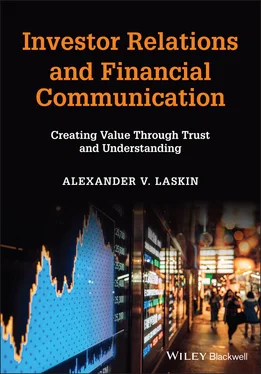67 61
68 62
69 63
70 64
71 65
72 66
73 67
74 68
75 69
76 70
77 71
78 72
79 73
80 74
81 75
82 76
83 77
84 78
85 79
86 80
87 81
88 82
89 83
90 84
91 85
92 86
93 87
94 88
95 89
96 90
97 91
98 92
99 93
100 94
101 95
102 96
103 97
104 98
105 99
106 100
107 101
108 102
109 103
110 104
111 105
112 106
113 107
114 108
115 109
116 110
117 111
118 112
119 113
120 114
121 115
122 116
123 117
124 118
125 119
126 120
127 121
128 122
129 123
130 124
131 125
132 126
133 127
134 128
135 129
136 130
137 131
138 132
139 133
140 134
141 135
142 136
143 137
144 138
145 139
146 140
147 141
148 142
149 143
150 144
151 145
152 146
153 147
154 148
155 149
156 150
157 151
158 152
159 153
160 154
161 155
162 156
163 157
164 158
165 159
166 160
167 161
168 162
169 163
170 164
171 165
172 166
173 167
174 168
175 169
176 170
177 171
178 172
179 173
180 174
181 175
182 176
183 177
184 178
185 179
186 180
187 181
188 182
189 183
190 184
191 185
192 186
193 187
194 188
195 189
196 190
197 191
198 192
199 193
200 194
201 195
202 196
203 197
204 198
205 199
206 200
207 201
208 202
209 203
210 204
211 205
212 206
213 207
214 208
215 209
216 210
217 211
218 212
219 213
220 214
221 215
222 216
Part I Profession
1 Introduction to Investor Relations and Financial Communication
Definition
Many people rely on the stock markets and entrust their future to the efficiency of the investment system. Think about it: in the United States alone pension and retirement saving accounts constitute about US$20 trillion in assets, with most of those assets being equities and bonds. Efficient markets require information in order to function properly – corporations disclose important details related to their operations and finances to ensure all market participants, from professional investors managing billions of dollars to a retired teacher in Iowa with a few hundred dollars invested, have the same access to the information they need to make an informed decision about their investments. Investor relations professionals are on mile one of this information highway, enabling timely and comprehensive disclosure in order to help all investors better understand the company’s business and its value, and help investors better understand what they can expect from their investments in the future. In other words, the goal of investor relations becomes not just disclosure of information but educating investors and managing their expectations related to the accurate, or fair, value of the corporations.
The largest professional organization for investor relations, the National Investor Relations Institute (NIRI), proposes the following definition of investor relations: “a strategic management responsibility that integrates finance, communication, marketing and securities law compliance to enable the most effective two-way communication between a company, the financial community, and other constituencies, which ultimately contributes to a company’s securities achieving fair valuation.”
The key part of this definition is the fair valuation – this is what all investor relations activities should be targeted at according to the NIRI’s definition. This focus on fairness is important. It means investor relations professionals, who are often referred to as IROs (investor relations officers), should be eager to disclose negative information as much as positive; information that can pull the stock price down as much as information that can push the stock price up. Indeed, if IROs focus only on positive updates and trying to hide or diminish the impact of negative developments, they may contribute to a phenomenon called overvaluation , which is when stock price is priced above its fair market level. The danger of overvaluation lies in overcorrection: if and when all information finally becomes available, market participants may overreact to the negative news as it would typically come as a surprise, as a leak, or as a discovery by a third party such as a business journalist or a financial analyst, and may send the stock price below even what would be the fair price. In addition, these events tend to undermine the credibility of the company, its management, and its investor relations department, compromising all future disclosures and putting the relationships between the company and the financial stakeholders at risk.
The concept of fair market valuation is based on the efficient market hypothesis, which defines an efficient market as “a market in which prices always ‘fully reflect’ available information” (Fama, 1970, p. 383). Such a market is in equilibrium: all securities are fairly priced, according to their risks and returns. No investors can consistently outperform, or beat, the market, and thus there is no reason to constantly buy and sell shares of companies trying to outperform the average market return. The efficient market hypothesis, however, requires key assumptions to be met: all relevant information about the company and its performance is publicly available, all market participants have equal access to such information on a timely basis, and all investors are rational and capable of evaluating the information available to them.
Thus, investor relations, a function charged with providing information about the company to shareholders, financial analysts, and other market participants, is at the very foundation of the efficient markets. In fact, investor relations becomes a key activity not just for a particular company but for the whole modern economy. The survival of modern capitalism depends on how well IROs perform their task in ensuring equal access to information for various financial market participants. IROs are tasked with ensuring that the key assumptions of the efficient market hypothesis are met through extensive and timely disclosure of all relevant information pertaining to the company and its securities.
It is not enough for IROs just to disclose the information, however, for the share price to arrive at its fair value. Disclosure in itself may not be enough for a successful investor relations program. The efficient market hypothesis requires not just access to information but also understanding of the information and developing reasonable expectations based on such information. It is possible for somebody to have access to accurate information but still make incorrect conclusions based on it or have unreasonable expectations based on that information. A big part of an IRO’s job is similar to the job of a teacher: IROs must educate investors, shareholders, financial analysts, business journalists, and others on what this information actually means for the company – what the implications of the information are for the future of the company.
Today’s businesses are complex structures making money on advanced technological developments, intangible reputational assets, and unique processes they develop over multiple years. For example, it may not be sufficient for the investor relations department of a pharmaceutical company to disclose information about the discovery of a novel chemical compound – for many in the investment community this information may not mean much. Instead, it may be important to explain what the potential of that chemical compound is – maybe it can lead to a new type of medication that will completely revolutionize how certain types of health conditions are treated. Without such in-depth knowledge of this discovery, it may be impossible to know how this compound may make extraordinary profits for the company in the future. Yet, it is important not to oversell and to talk about the challenges as well – how much time it may take before this discovery can become a marketable product, what are the potential roadblocks along the way, and what are the chances of success or failure. Again, people in the financial community, outside of the company, may not have a good understanding of all these details even if they have been disclosed to them. They require more than just an information dump; they require explanation and guidance in order to understand how this discovery can affect the business and value of the company. Thus, it is impossible for anybody to arrive at the fair value of a company without some help from the investor relations professionals doing their job of disclosing the information and educating the investment community.
Читать дальше











